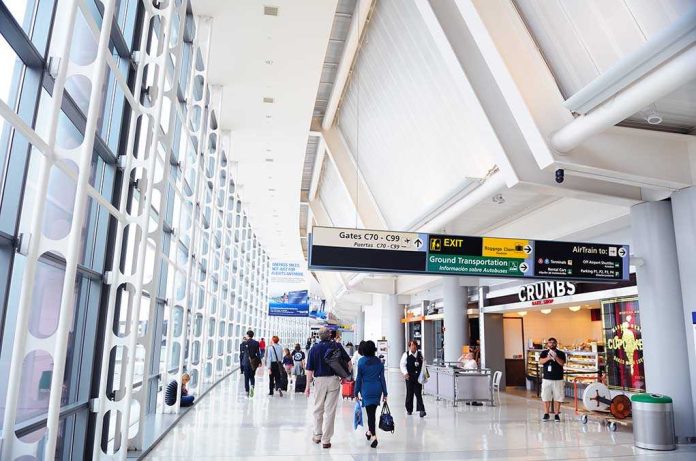
Security failures at Sea-Tac Airport have enabled yet another prisoner escape—exposing gaps in public safety and raising urgent questions about government accountability.
Story Snapshot
- Second prisoner escape at Sea-Tac Airport in three months highlights systemic security lapses.
- 20-year-old John Nino, under community supervision for robbery, remains at large following dramatic airport break-out.
- Incident raises concerns about Department of Corrections (DOC) protocols and risks to public safety.
- Pattern of escapes puts pressure on officials for policy changes and stricter oversight at transportation hubs.
Repeated Prisoner Escapes Expose Systemic Security Failures
On August 12, 2025, John Nino, a 20-year-old burglary convict, escaped from two Washington Department of Corrections officers while being transported at Seattle-Tacoma International Airport. Nino broke free in the fourth-floor parking garage, sprinted toward the SeaTac light rail station, and vanished toward Highway 99. This marks the second time since May that a prisoner has escaped at Sea-Tac, casting doubt on current security protocols and intensifying public concerns about safety at one of the nation’s busiest travel hubs.
Nino’s escape is not an isolated event. In May 2025, Sedric Stevenson also broke free at Sea-Tac and eluded capture for more than six weeks. Another incident in July involved a detainee running from ICE agents, though that individual was recaptured. The frequency of these escapes suggests ongoing, systemic problems in how inmates are supervised and transported through public areas, especially at airports where the stakes for public safety are high.
DOC Procedures and Accountability Under Scrutiny
The Department of Corrections is responsible for the safe transport and supervision of inmates, a task now under heavy scrutiny. Nino was not considered a high-security risk; he was under community supervision for a robbery conviction, not a violent felon requiring maximum security measures. Yet, the escape occurred in a public, high-traffic area, exposing travelers and residents near the airport to unnecessary risk. The incident has sparked calls for a thorough review of DOC procedures, inter-agency cooperation, and accountability measures to prevent similar failures.
Sea-Tac’s complex layout—with multi-level parking garages and easy access to public transportation—has become a vulnerability exploited by escapees. Law enforcement agencies, including the Port of Seattle Police and local departments, are now facing increased challenges in securing these transfer points. The DOC’s public warnings not to approach Nino underscore the potential danger, as well as the limitations of current strategies for securing inmate transfers in crowded environments.
Implications for Public Safety and Conservative Values
With Nino still at large as of August 13, 2025, the immediate risk to public safety is clear. Residents and travelers near Sea-Tac and Highway 99 face heightened anxiety while law enforcement resources are diverted to the manhunt. The pattern of escapes raises broader questions about government priorities: Are agencies more focused on bureaucracy than on protecting citizens? For conservatives, this situation exemplifies the consequences of lax oversight and misplaced trust in government systems that should prioritize order and security over convenience or cost-saving measures.
There are also economic implications, as repeated failures may force costly upgrades to security infrastructure and require additional training for personnel. Public frustration grows as these incidents erode confidence in government accountability and competence. The fact that these lapses continue despite repeated warnings and previous escapes calls for systemic reform—potentially including stricter federal guidelines or direct oversight to safeguard the public and uphold the rule of law.
Expert and Community Perspectives
Law enforcement officials emphasize their commitment to recapturing fugitives, with U.S. Marshals involved in previous high-profile manhunts. Yet, operational challenges and resource constraints are common refrains from those tasked with maintaining security in such high-traffic settings. Public and media voices, meanwhile, demand greater transparency and accountability, pointing out that recurring escapes are unacceptable and undermine trust in both local and state agencies.
Sources:
Prisoner escapes custody at Sea-Tac Airport in Washington
Prisoner escapes custody at Sea-Tac Airport while being transported
Prisoner escapes custody at Sea-Tac Airport, search underway
Prisoner escapes custody at Seattle airport
20-year-old escapes custody at Sea-Tac Airport









